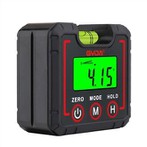Industrial infrared thermometer determines temperature measurement range
Determine the temperature measurement range: The temperature measurement range is the most important performance indicator of the thermometer. For example, infrared era products cover a range of -40℃-+3000℃, but this cannot be accomplished by one type of infrared thermometer. Each model of thermometer has its own specific temperature measurement range. Therefore, the user's measured temperature range must be considered accurately and comprehensively, neither too narrow nor too wide. According to the blackbody radiation law, the change in radiant energy caused by temperature in the short-wavelength band of the spectrum will exceed the change in radiated energy caused by the emissivity error. Therefore, shortwave should be used as much as possible when measuring temperature. Generally speaking, the narrower the temperature measurement range, the higher the resolution of the output signal for monitoring temperature, and the accuracy and reliability are easier to solve. If the temperature measurement range is too wide, the temperature measurement accuracy will be reduced. For example, if the target temperature being measured is 1000 degrees Celsius, first determine whether it is online or portable, and if it is portable. There are many models that meet this temperature.
How to determine the distance coefficient of an infrared thermometer?
The distance coefficient is determined by the ratio D:S, that is, the ratio of the distance D between the thermometer probe and the target to the diameter of the measured target. If the thermometer must be installed far away from the target due to environmental conditions, and small targets need to be measured, a thermometer with high optical resolution should be selected. The higher the optical resolution, that is, the higher the D:S ratio, the higher the cost of the thermometer. Raytek Infrared Thermometer D:S ranges from 2:1 (low distance factor) to over 300:1 (high distance factor). If the thermometer is far away from the target and the target is small, a thermometer with a high distance coefficient should be selected. For a thermometer with a fixed focal length, the focus of the optical system is the smallest position of the light spot, and the light spot will increase both near and far from the focus position. There are two distance coefficients. Therefore, in order to accurately measure temperature at distances close to and away from the focus, the size of the target to be measured should be larger than the spot size at the focus. The zoom thermometer has a minimum focus position that can be adjusted according to the distance to the target. As D:S increases, the received energy decreases. If the receiving aperture is not increased, it will be difficult to increase the distance coefficient D:S, which will increase the cost of the instrument.






